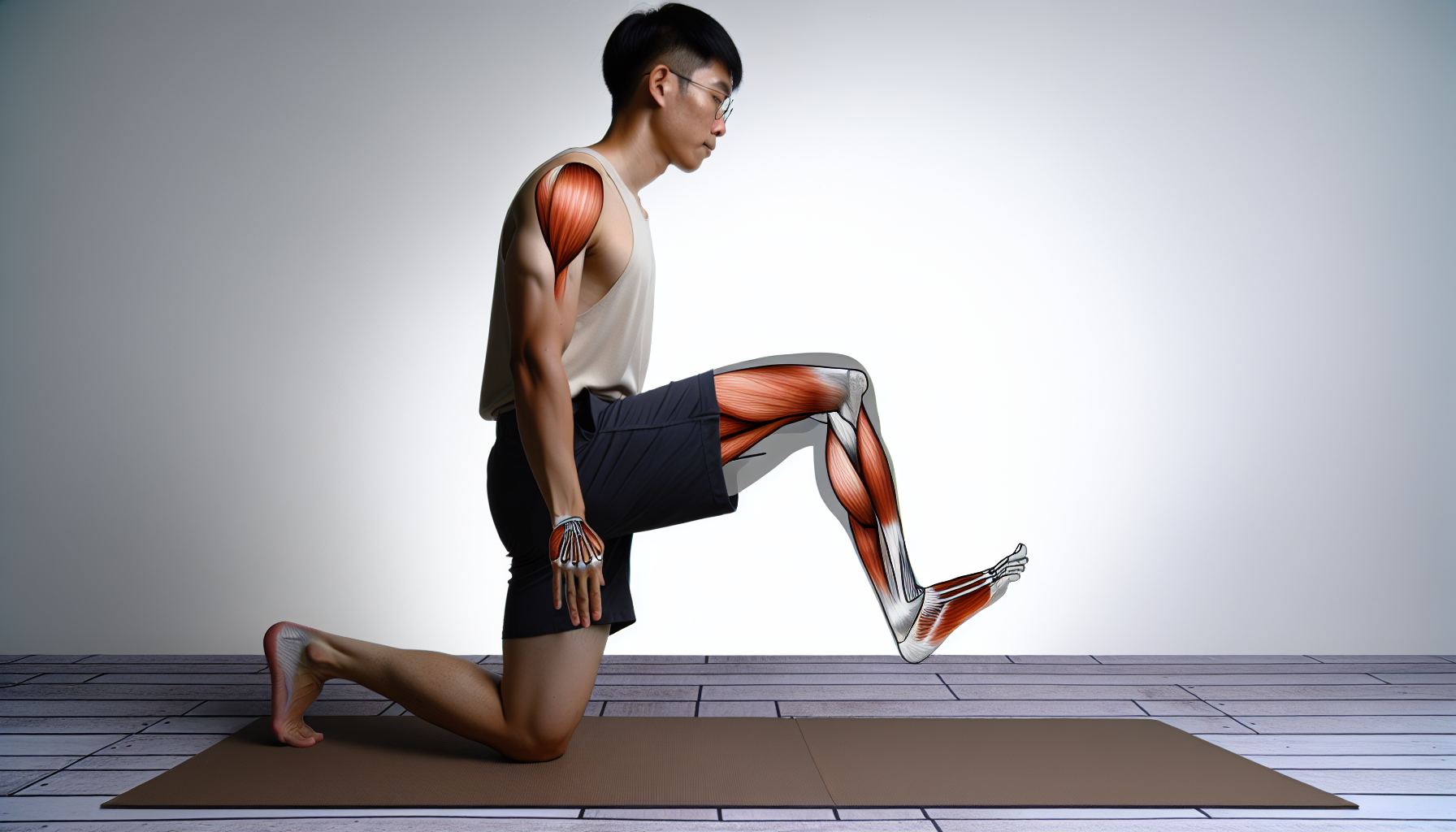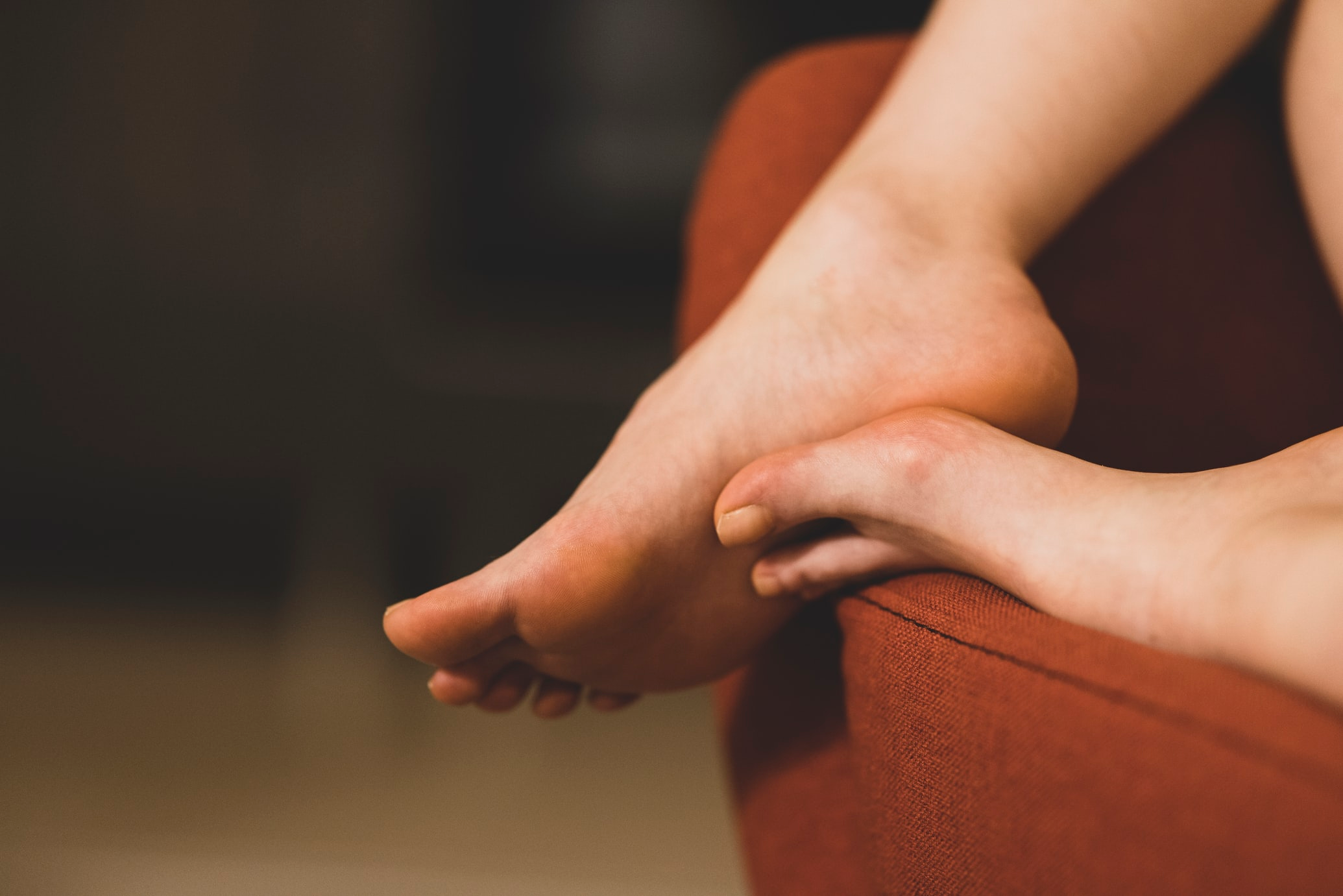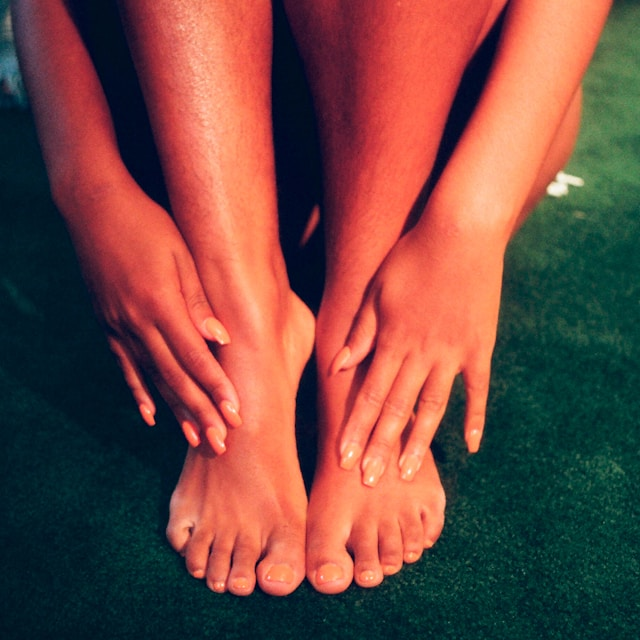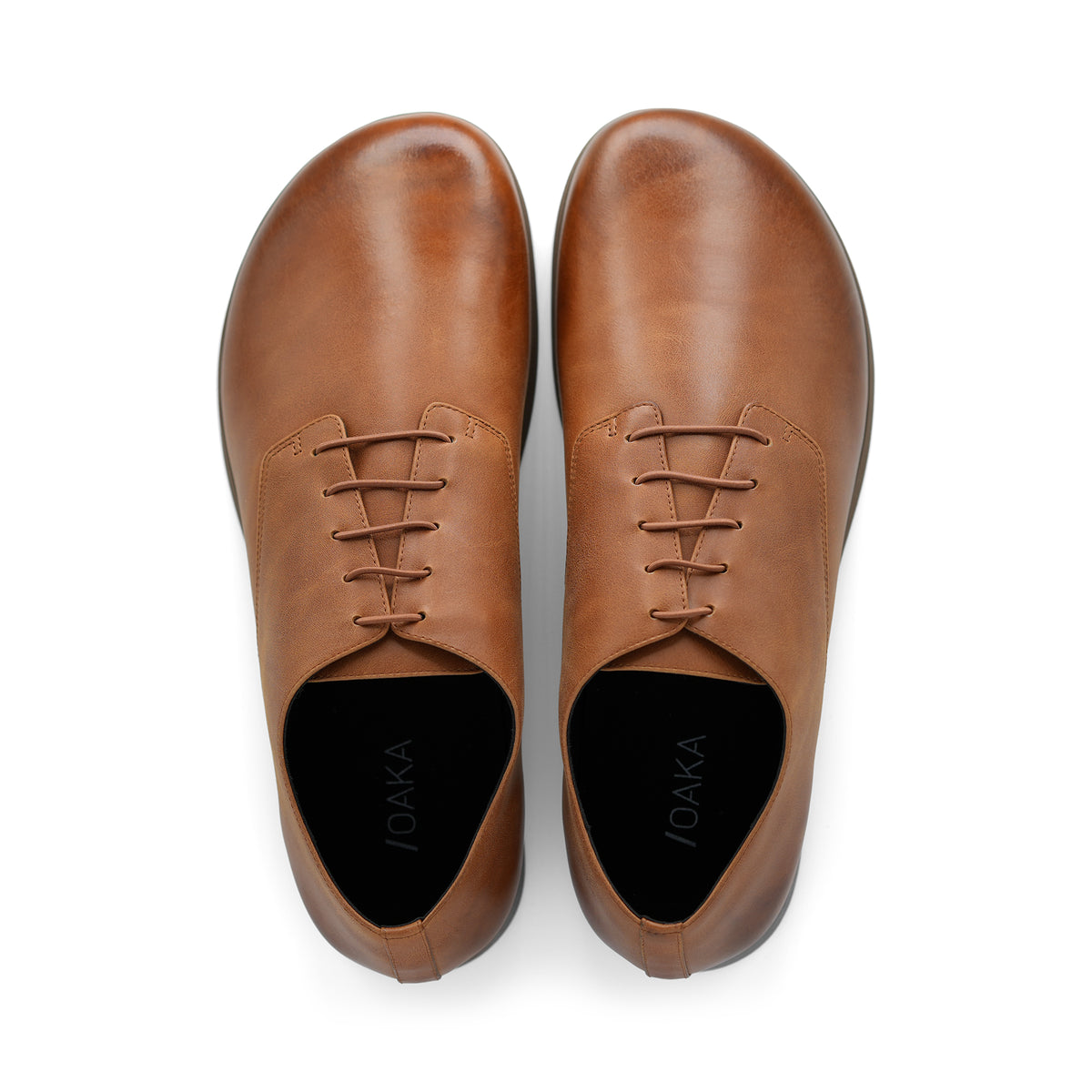Struggling with flat feet or simply aiming to boost your foot support? Look no further: this article provides straightforward arch strengthening exercises that can help. Expect to learn about techniques such as arch lifts, heel raises, and toe yoga, which are designed to improve the strength and stability of your feet’s arches. Get ready to embark on a journey to more powerful and pain-free steps.
Key Takeaways
-
Strong foot arches are crucial for shock absorption, balance, and reducing the risk of developing conditions such as plantar fasciitis, especially in individuals with flat feet.
-
Exercises such as arch lifts, heel raises, toe yoga, and the Short Foot drill can significantly improve foot strength, flexibility, and stability, thus providing better support for the arches.
-
In addition to exercises, a customized physical therapy plan, home remedies, proper footwear, and supportive insoles are vital for maintaining arch health and preventing foot-related problems.
Building a Strong Foundation: Why Arch Strength Matters

Daily locomotion heavily relies on the arches of your foot. Absorbing forces generated during activities like running, they contribute significantly to shock absorption and balance. High arches, in particular, are associated with enhanced dynamic balance and speed performance. An efficiently functioning arch minimizes unnecessary lateral movements during locomotion, pushing you forward with gusto. These small but mighty curves are key for maintaining balance and adapting the feet to varied surfaces, indicative of a strong foot muscular system.
Yet, all feet are not made alike. Flat feet, or the loss of the arch when standing, interfere with proper foot alignment and function. Flat-footed individuals tend to have thicker plantar fascia and reduced ankle capacity, which are potential risk factors for developing plantar fasciitis. The compensatory gait adjustments in individuals with flat feet, due to unbalanced weight loading, increase the likelihood of plantar fascia thickening and plantar fasciitis.
Flat feet can cause excessive stress and strain on the plantar fascia, resulting in inflammation and degeneration commonly associated with plantar fasciitis. With flat feet altering knee and hip movements to compensate for insufficient ankle dorsiflexion, the risk of plantar fasciitis is elevated, pinpointing the need for preventive interventions. This raises an essential query: What steps can we take to strengthen our arches?
Essential Exercises for Arch Fortification

Maintaining proper foot alignment and support fundamentally relies on flat feet exercises designed to fortify the foot arches. Here are some simple exercises for flat feet that you can try:
-
Arch lifts
-
Towel scrunches
-
Toe crawls
-
Toe lifts
These exercises are your first line of defense against fallen arches.
A deeper exploration of these beneficial exercises will reveal their collective role in enhancing your foot support and alignment.
Heel Raises for Elevated Arch Power

Heel raises, a simple exercise that can be performed anywhere, are particularly noteworthy among exercises for flat feet. These exercises enhance arch strength by targeting the calf muscles, which support the arch of the foot. By strengthening calf muscles, heel raises also contribute to overall foot stability, providing indirect support to the foot arch, especially for those with feet flat.
The technique is straightforward: stand on your toes, raise your heels off the ground, hold for at least a second, and then slowly lower your heels back to the floor. For a more enhanced version, try stair heel raises- standing on the balls of your feet on a stair step, lift your heels up and then lower them below the step level, typically for 8 to 12 repetitions.
As you grow more comfortable with the exercise, you can intensify it by adding weights or performing the exercise on one leg, further benefiting arch power. Another way to increase the challenge of heel raises and build arch strength is by holding a small object between the ankles during the exercise.
You may also find barefoot shoes useful as they force your feet to work more when walking. It's important to gradually transition to barefoot shoes and not over do it too soon. This will naturally strengthen your feet throughout the day. If you are looking for a barefoot dress shoe please feel free to check out OAKA.
Toe Yoga for Flexible Arches
Despite sounding unusual, toe yoga serves as an excellent method to enhance the strength and flexibility of your toes and feet. By starting with simple exercises and establishing a regular toe yoga routine, you can gradually develop stronger and more mobile toes and feet.
Practicing toe yoga once or twice daily for a few minutes per foot is recommended for optimal results in strengthening and increasing toe and foot mobility. Toe yoga exercises such as spreading the toes apart, lifting the big toe followed by the other toes, and lifting and dropping the heel with toes spread can significantly improve the mobility and strength of the foot arch.
The Short Foot Drill
The Short Foot exercise serves as an underappreciated tool for arch strengthening. It involves:
-
Creating a dome shape with the arch by bringing the ball of the foot toward the heel for eight seconds
-
Followed by a rest for a few seconds
-
Can be performed while seated and progressed to a standing position
This exercise strengthens the foot’s intrinsic muscles, supporting the medial longitudinal arch and enhancing the body’s balance.
The benefits of the Short Foot exercise include:
-
Improved arch strength
-
Better athletic performance
-
Improved motor sensation and postural movements for greater foot stability
-
Notable arch height increases over a five-week period in people with flexible flatfoot
Consistent practice of the Short Foot exercises can help you achieve these benefits.
Advanced Techniques for Strengthening Flat Feet
Once you’ve mastered the essential exercises, you can elevate your arch strengthening with more advanced techniques. Progressing to advanced techniques introduces new challenges to your exercise regimen, significantly improving foot support.
Techniques such as the stork stretch and heel stretches, which involve standing on one foot and raising the other, amplify the pressure on the supporting foot, thereby improving balance and arch strength.
Dynamic Arch Sculpting with a Tennis Ball

A tennis ball, despite its unassuming appearance, can serve as a potent instrument for enhancing arch strength. Here’s how to use a tennis ball to strengthen your arch:
-
Sit on the edge of a chair.
-
Place the tennis ball under the arch of your foot.
-
Roll the tennis ball from the ball of your foot towards the heel, applying continuous pressure to massage and stretch the arch.
This exercise can help increase arch strength and provide pain relief.
For a comprehensive entire foot massage, follow these steps:
-
Roll the tennis ball in small circles, targeting the forefoot, arch, and heel.
-
Adjust the pressure according to your comfort level.
-
Let the gentle movement of the ball release tension and stimulate blood flow to your foot.
Balancing Acts: One-Legged Stands
Single-foot balancing exercises, such as the stork stretch, engage the entire foot’s muscles, offering a comprehensive workout to boost foot strength. While these exercises focus on one foot at a time, it’s essential to practice them with both your feet, starting with your left leg. During single-leg standing exercises, pressing the heel and the ball of the great toe firmly on the floor helps raise the inner arch, which is pivotal for building arch strength while maintaining balance.
To ensure effective muscle engagement and prevent injury, it’s crucial to keep your feet parallel, toes relaxed on the floor, and avoid locking your knee while performing one-legged stands with one leg forward. Regular practice of these balancing acts will result in stronger arches and better foot stability.
Customized Exercise Plans with a Physical Therapist
Although self-guided exercises offer benefits, a personalized physical therapy plan can elevate your foot health. Therapists design these plans to enhance foot arch support, with exercises for:
-
muscle lengthening and strengthening
-
posture-building exercises
-
manual therapy techniques
-
targeted stretches
Physical therapy can manage foot pain, including foot arch pain, support the body’s natural healing process, lead to quicker recovery, and potentially prevent the need for invasive surgery. Therapists may employ specific strategies such as correcting walking patterns and utilizing ankle braces to treat flat feet, which can also help alleviate related ankle, knee, and back pain by improving the ankle range.
Home Remedies for Supporting Arch Health

Beyond exercises, home remedies contribute greatly to the maintenance of arch health and alignment. Some gentle stretching exercises for the foot arches include:
-
Plantar fascia stretch: This helps improve flexibility and reduce tension in the arches.
-
Bilateral calf stretch with knees straight: This indirectly maintains arch health by increasing flexibility in nearby muscles and joints.
-
Variation of bilateral calf stretch with knees bent: This is another option to increase flexibility in the calf muscles and maintain arch health.
These home remedies can be incorporated into your routine to support the health and alignment of your arches.
Some ways to support your arches and relieve tension in the arch area include:
-
Plantar fascia self-massage using a firm object to stimulate blood flow
-
Wearing athletic shoes and boots with thick soles and cushioned padding for substantial arch support, especially during high-intensity activities or in colder seasons
-
Choosing shoes with built-in arch support to prevent the feet from rolling inward or outward and provide extra padding under the arches for foot health and alignment
-
Using arch support insoles to distribute pressure evenly across the foot and offer stability by filling gaps in the arch, which can also positively impact knee, hip, and back alignment.
Summary
We’ve journeyed through the world of arch strengthening exercises, explored the role of physical therapy, and discovered simple home remedies to support arch health. The importance of strong, flexible arches in maintaining balance, alignment, and preventing conditions like plantar fasciitis cannot be overstated. With a wide range of exercises from heel raises to one-legged stands, as well as the use of everyday items like tennis balls and well-structured shoes, maintaining robust foot health is within everyone’s reach.
Take a step towards better foot health today. Remember, every journey begins with a single step, and with strong arches, your steps will be confident and pain-free.
Frequently Asked Questions
How do you strengthen your arches?
To strengthen your arches, consider exercises like arch lifts, heel raises, towel pickup, toe lifts, and calf stretches, which can help maintain structure and strength in your foot's arch. Another option includes heel stretches, tennis/golf ball rolls, calf raises, stair arch raises, towel curls, and toe raises. It's important to consider these exercises to improve the strength of your arches.
Can you rebuild arches in flat feet?
Yes, fallen arches can be rebuilt through exercises like toe raises, calf raises, arch lifts, and using a tennis or golf ball to strengthen the arches and support ligaments.
Do foot arch exercises work?
Yes, foot arch exercises work by relieving pain, strengthening your feet and ankles, and improving your posture. Consider incorporating these exercises into your routine for overall foot health.
Why is arch strength important?
Arch strength is important because it supports shock absorption, balance, and proper foot alignment, while weak or flat arches can lead to various foot-related issues.
Can I use everyday items to help strengthen my arches?
Yes, using a tennis ball for foot massages and dynamic arch sculpting, along with well-structured shoes or arch supports, can help strengthen your arches and maintain their health and alignment.
_____________
P.S. Try OAKA, our barefoot Derby style dress shoe that strengthens your feet and provides all day comfort.
---
Michael Plater is an authority on barefoot shoes, having spent years reviewing and testing products as well as modifying and ripping out soles to find the healthiest options.

